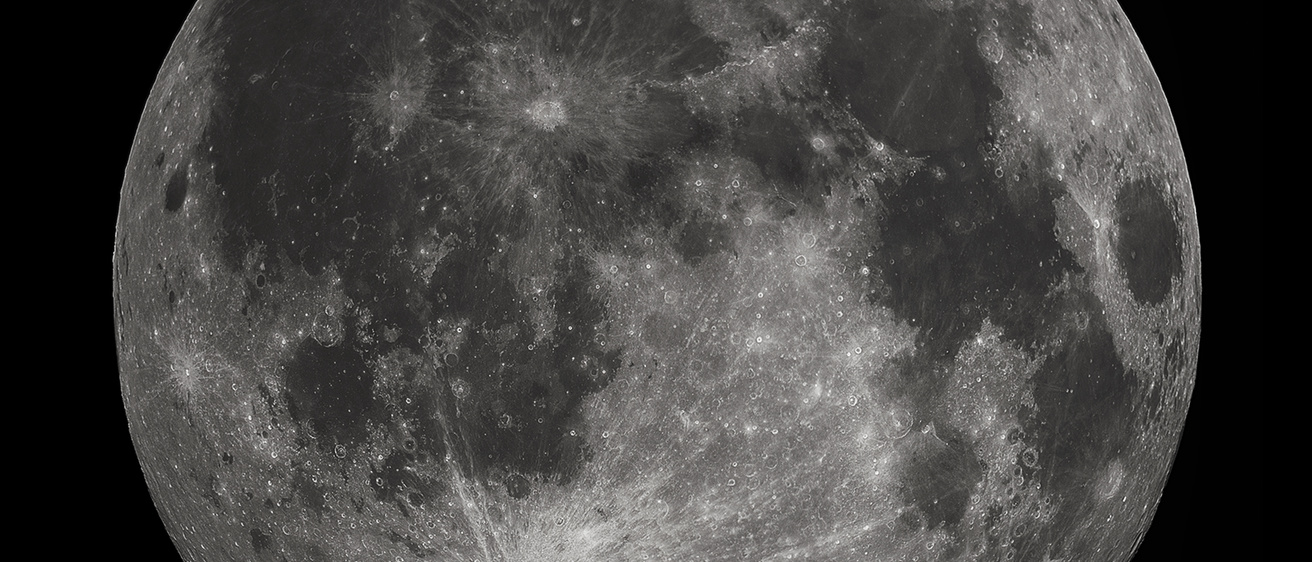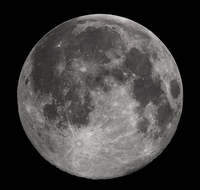
Breadcrumb
- Home
- Labs
- Observational Labs
- Observing Lunar Features
- Part 2: Observing Lunar Features
Part 2: Observing Lunar Features
Lunar Phase
The moon goes through phases in the night sky with the amount of the moon's surface that is illuminated changing each night. Your instructor will take you outside to view the moon in it's current phase. Note the current phase of the moon including if it is waxing or waning. Using your knowledge of the moon's phases, estimate the rise and set time of the moon today based off of the current phase.

Description of the Surface
Your group will be supplied with an 8-inch Celestron telescope to observe the moon. This telescope is the same as was used for the Introduction to Telescopes lab. Set up the telescope on the roof with a clear view of the moon, remembering to point the polar axis of the telescope north.
After assembling your telescope, observe the moon through the telescope or you can find an image of the moon . What sort of features do you notice of the surface. Describe what you see. (Mountains, plains, craters, seas, cheese, lunar landers, et cetera.)
Mapping Lunar Features
With your group, create a rough map of the moon. You should try to map several different features seen on the moon. After creating your map, you will be provided with a moon atlas. Use this atlas to identify the features of the moon your group mapped. Describe the geological features that make up the areas in your map.